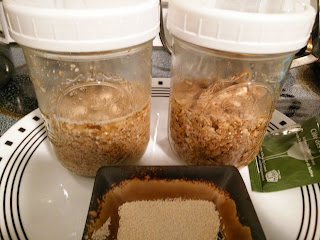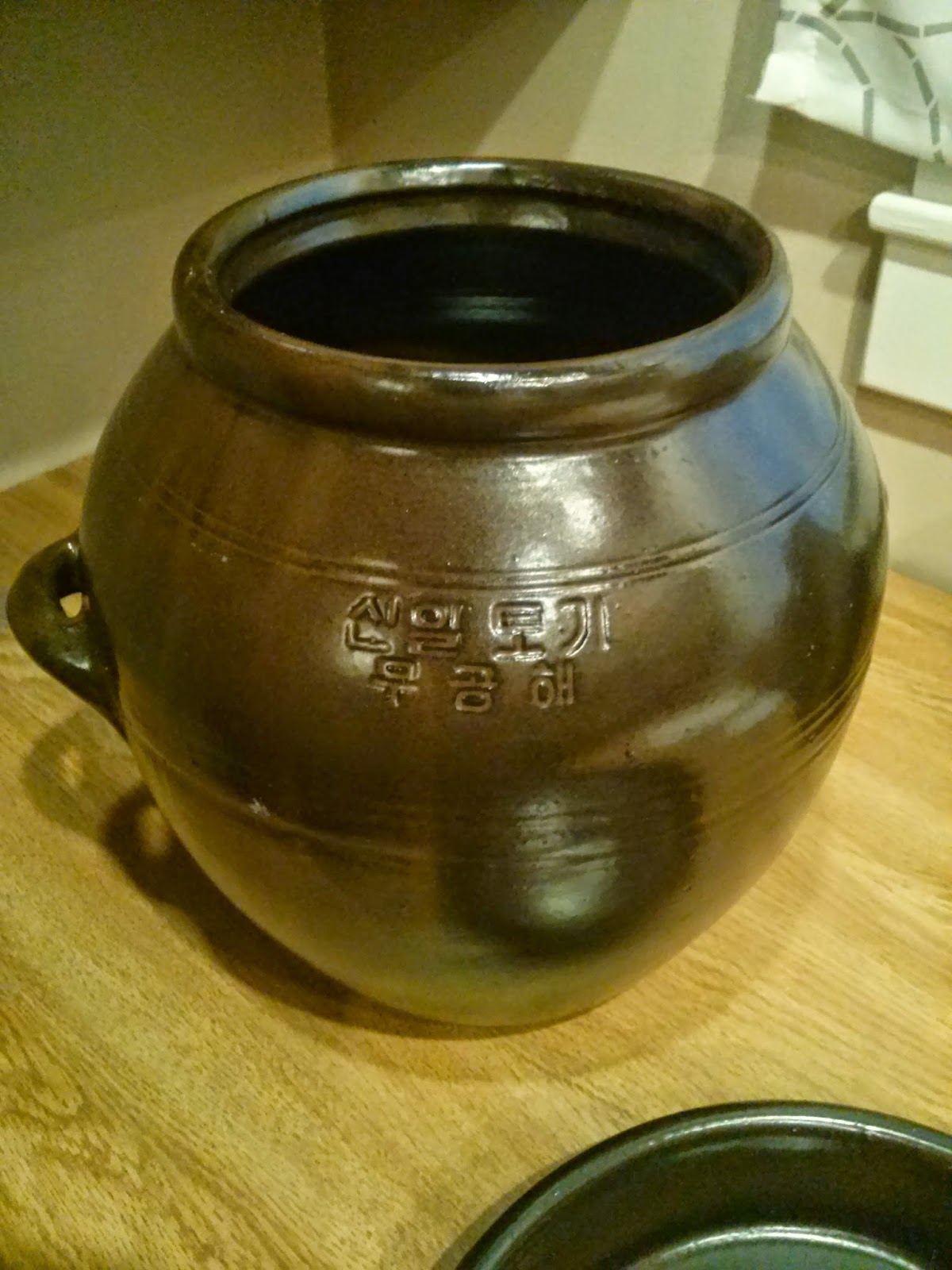Making, Drinking, and Enjoying Makgeolli | Understanding Makgeolli 2 | Brewing Fundamentals, Nuruk, Making Nuruk, etc.
************************************************************
DISCLAIMER: THE SOURCE MATERIAL FOR THIS TRANSLATION WAS NOT DERIVED FROM MY KNOWLEDGE OR EXPERTISE. ALL CREDIT FOR THE SOURCE MATERIAL GOES TO KIM SEONGMAN, THE AUTHOR OF MAKING DRINKING AND ENJOYING MAKGEOLLI. THIS TRANSLATION IS SOLELY FOR INFORMATIONAL PURPOSES.
***********************************************************
1편 막걸리 알아가기
Part 1: Understanding Makgeolli
The Most Easily Learned Fundamentals of Brewing in the World
The principle of making and brewing alcohol uses yeast to ferment fruits containing fructose or grains containing starch, which is saccharized by an amylase[6], in a solution where yeast has been introduced to make alcohol and carbonic gas. The fermentation of alcohol is a process where yeast ingests sugar and breaks it down into ethyl alcohol and carbon dioxide. To explain this principle simply, after the yeast ingests the sugar the cell must break it down to acquire energy and keep living. Here the by-product created in this breakdown is alcohol.
That is, when growing, yeast consumes sugar in an environment containing oxygen, while in the condition where there is no oxygen alcohol is formed. In the first stage of fermentation there is mostly yeast growth compared to the formation of alcohol; however if the oxygen totally disappears, the creation of alcohol has begun. As the fermentation progresses, mostly ethyl alcohol and carbon dioxide is created, but more than 300 kinds of chemical compounds are also created as a bi-product of metabolism. Methane, acetaldehyde or similar toxic substances and all kinds of organic compounds, such as Fusel alcohol and esters, as well as elements of taste and smell are created which determine the alcohol’s flavor and quality.
If we observe carefully, the fermentation of alcohol theoretically produces a certain volume of alcohol as in the following explanation.
100 kg of starch (111 kg if converted from sugar, about 139 kg if converted from rice) makes about 71.5 liters of pure alcohol, and the alcohol fermentation process, as well as the amount produced, is shown in the following figure.
Understanding Nuruk
In the Encyclopedia of Eastern Medicine[7], nuruk is listed as an innocuous medicinal that helps digestion and can be used to treat dysentery. The enzyme that causes the mold in nuruk breaks down protein, fats, and carbohydrates and acts as a digestive aid. This is useful to the intestines because it contains a large quantity of lactobacillus. And so, in one room nuruk was called shinguk (神麴), shingok (神麯), or medicinal nuruk and was used as a medicine. Moreover, Korean ancestors have been using these kinds of nuruk to brew alcohol for a long time.
When brewing alcohol nuruk, namely guk (麴)or gokja (麯子), carries out the role of changing starch, the main ingredient of rice, barley, wheat, corn, etc, to grape sugars while simultaneously making alcohol through fermentation. Amylase breaks down the starches of main ingredients like steamed rice into sugars; here the sugars get help from oxygen as the yeast grows, and when the oxygen is used up the sugar ferments and alcohol is made.
Traditionally, nuruk made from unpeeled whole grain, milnuruk (밀누룩), is used. Within the hull of the grain there is an abundance of protein, vitamins, and enzymes which allow the nuruk bacteria to propagate uniformly. This makes it possible to brew alcohol with a deep flavor and taste and better fermentability compared to nuruk made with other grains.
Nuruk can be classified differently depending on the way it’s made, the time it’s made, and its raw materials. Since the raw materials differ, it can be classified as grain nuruk, rice nuruk, barley nuruk, etc. depending upon the condition of the flour (분곡), which differs with how it is ground, the grind condition or coarseness of the grind (조곡), and the grain composition or how the grain is divided (백곡). Also, nuruk can be classified differently depending on the time it is made; Chungok (춘곡) if made in Spring, Hagok (하곡) if made in Summer, Chugok (추곡) or Jeolgok (절곡) if made in Autumn, and Donggok (동곡) if made in Winter. Among these, the one with the best quality is Jeolgok made with grain right after it has been harvested. Insects aren’t present in Jeolgok, so very high quality nuruk can be made.
When you make nuruk, the climate and environment is a big influence; this is because the conditions for microorganisms to grow and develop differ with temperature and humidity. Furthermore, the nuruk can be influenced by the process of stamping into a mold or a manufacturer’s technique. Although the quality of nuruk can change depending on these various factors, they are important elements in determining the flavor, aroma, and strength of the alcohol.
Recently, many varieties of high quality aspergillus[8] have been cultivated and used, but not cultivated naturally like traditional nuruk[9]. This kind of improved nuruk[10] has a much better ability to convert sugar into starch compared to traditional nuruk, which gives it the benefit of being able to produce a comparatively safer alcohol. However, because it is widely used when making alcohol, it is assumed to have the downside of producing a dull flavor.
Therefore to brew alcohol with a little more character, it be best to make nuruk yourself or purchase pre-made nuruk of an exceptional quality, but in the case where you can’t do that, if you mix traditional nuruk and improved nuruk and use it in the right proportion, the pros and cons of each nuruk will supplement each other and you can easily make delicious alcohol.
Making Nuruk
- Select the Ingredients
- Thick, tightly packed grains of wheat are use, so pebbles and extraneous particles should be sorted out.
- Grind
- It is best for the wheat to be ground evenly, so using a mortar and pestle wouldn’t hurt.
- Add Water
- A general rule is to evenly sprinkle and mix about 20% of the total amount of water and depending on the dryness of the wheat adjust the amount of water as you knead. Be careful if the water isn’t absorbed evenly, because the areas with lots of moisture will mix easily and the areas with low moisture crumble easily, which can cause problems to arise during shaping or fermentation.
- Shape the Nuruk
- Muslin cloth is spread over the nuruk mold and an appropriate amount of nuruk is placed inside and firmly stepped on for shaping. When shaping nuruk, make a dent in the middle of the cake in order to avoid excess heat in the center. As for the thickness, if it is too thick, it is difficult for moisture to escape so it will not be good if the temperature is too high, and because it is difficult to regulate the dryness, the center of the nuruk easily decays. On the other hand if the nuruk is too thin, the moisture will escape easily and bacteria will not propagate well, resulting in a decreased ability to ferment.
- Ferment[11] the Nuruk
- Stack the shaped nuruk in a suitable fashion, layer upon layer, and in between the layers spread a thin layer of straw, mugwort, pine needles or reed. If you don’t have those materials, cardboard or newspaper makes a suitable substitute. Put the shaped nuruk on in a warm location[12] (35~40 C) or on top of a heating, cover with blankets, and let ferment for about 15 days. The nuruk should maintain a temperature of 35~40 C and not exceed 45 degrees. Turn the nuruk over every 2 to 3 days and alternate the levels of stacked nuruk by moving them up or down. When microorganisms propagate thoroughly to the center of the nuruk, it should be tinged yellowish-white or grayish-white. If dark red mold spores that look like fine hairs have spread and a smell unique to mold bran is emitted, the nuruk is complete. If the nuruk has fermented less than that, it should ferment for a number of days longer.
- Storage and Usage
- Dry the completed nuruk in a shaded, well-ventilated area for about a day. After removing extraneous materials and mold from the surface with a brush, put it inside 2 to 3 layers of paper bags and hang in a place with good ventilation. When needed, take out the nuruk and remove mold spores or any portion that has become blackened, and after it is finely ground it can be prepared[13] for 1 or 2 days and used.
Tip: Checking the quality of nuruk.
You can check for good nuruk by breaking it apart and looking at it. It should not have a smell of decomposition or fermented soybeans and it shouldn’t be brown on the inside. The nuruk should be tinged on the inside with a light yellow or gray color, and the mold should have propagated well and emit a nice, fresh scent unique to nuruk. For reference, the microorganisms which inhabit nuruk in large quantities are rhizopus, aspergillus, and mucor molds as well as saccharomyces (yeast), bacillus bacteria, and lactic acid bacteria probiotics.
[6] The amylase converts starch into sugar, specifically maltose, so it can be processed by the yeast.
[7] This is a translation of동의보감, which literally means “mirror of Eastern medicine”. It is an encyclopedia of medicinal knowledge written in the 16th or 17th century.
[8] This particular strain of mold is known as nuruk mold (누룩곰팡이) in Korean.
[9] Translated from “재래누룩” which literally means traditional nuruk.
[10] Translated from “개량누룩” literally meaning “improved nuruk”. This will also be referred to as manufactured or pre-made nuruk throughout this translation.
[11] The verb “띄우다” translates to ferment in the context of making makgeolli.
[12] The warm location originally refers to the “warmer side” of a floor heated by ondol. Nowadays ondol usually heats a house evenly, so this expression seems a bit antiquated.
[13] Prepare refers to “법제하다” which is a term specifically used in eastern medicine. With regard to nuruk, preparation involves grinding the nuruk to an appropriate consistency and leaving it out for a couple days. In this way, the nuruk becomes exposed to sunlight and morning dew before it is finally used. The purpose of this preparation is to prevent rancidity during fermentation.




Comments
Post a Comment